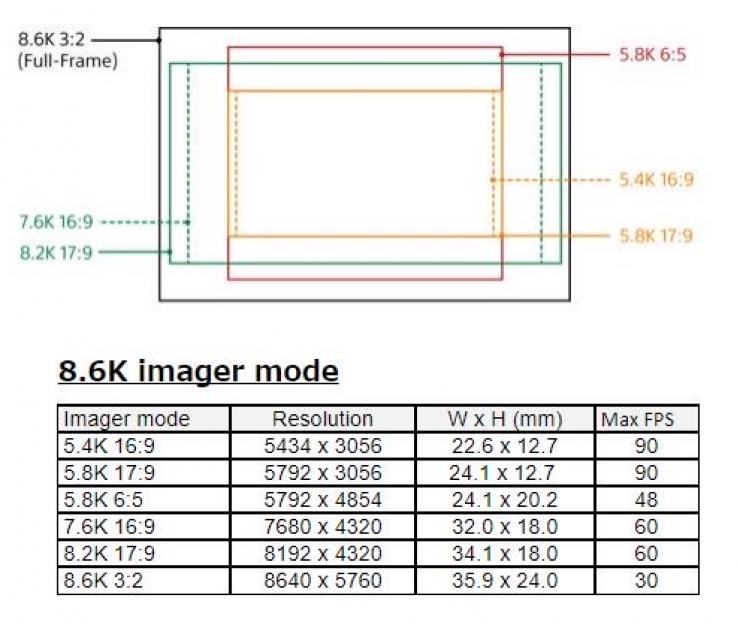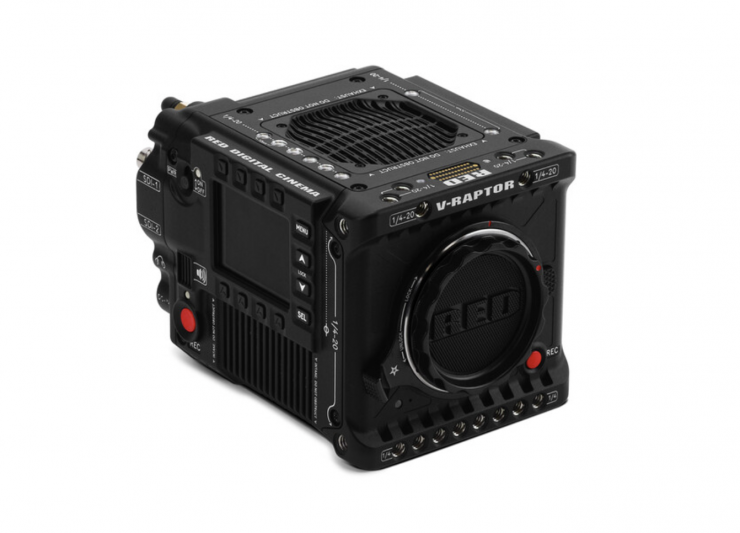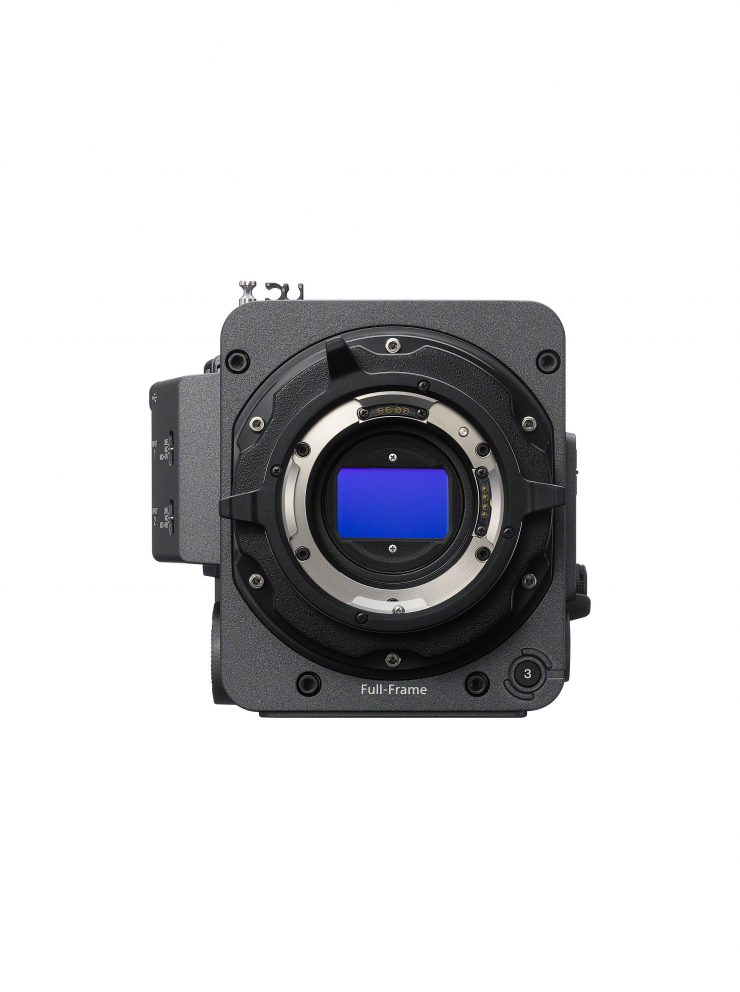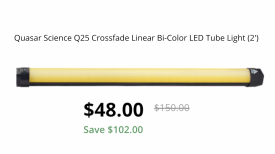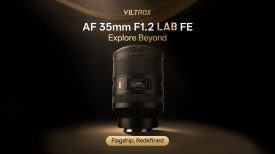Sony has unveiled their latest CineAlta digital cinema camera called BURANO. BURANO is an 8.6K (8640 x 5760) full-frame CMOS sensor camera that has autofocus capabilities, variable electronic ND, and IBIS. It has a dual native ISO of 800 and 3200 and it weighs 5lb / 2.2 kg (without the PL mount).

According to Sony, the BURANO is the world’s first digital cinema camera with Variable ND filter and in-body image stabilization in one body. There is also Fast Hybrid AF / Subject recognition by Al processing (with E-mount lens)
BURANO is scheduled to start shipping in the spring of 2024 for $25,000 USD.
Key features
- 8.6K full-frame CMOS sensor
- Dual Base ISO’s of 800 and 3200
- variable Electronic ND
- Fast Hybrid AF / Subject recognition by Al processing (with E-mount lens)
- E-mount & PL mount
- IBIS
- 16 stops of dynamic range
- X-OCN Recording
- XAVC H recording
- Dual CFexpress Type B card slots
- Dual full sized XLR inputs
- V-mount battery plate
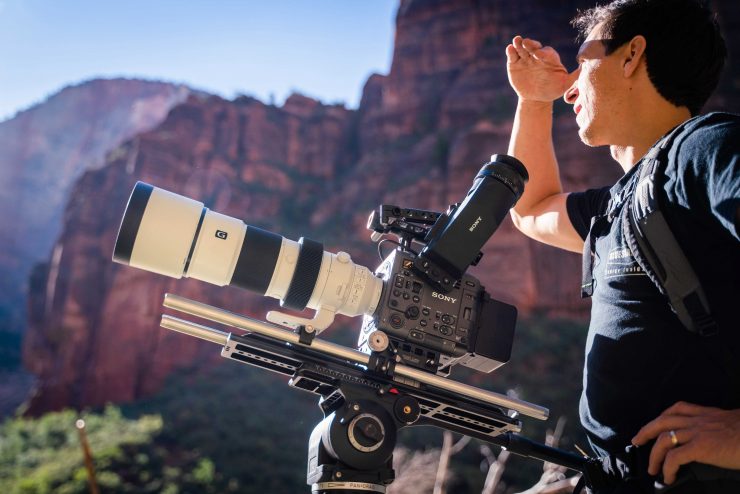
The camera is certainly being targeted at mid to high-end owner/operators who are prepared to spend over $20K for a digital cinema camera. Essentially the same demographic who were previously using cameras like the F5 and F55.
I can see it being used for docs, corporate productions, music videos, wildlife and nature, as well as being a popular B cam for a Sony VENICE 2. Yes, you could argue that it isn’t a perfect match to be used with the VENICE 2 because of the different recording modes and codecs, but it is certainly going to be a lot better match than an FX9.
Why the name BURANO?

BURANO might sound like a strange name for a camera, but there is a good reason behind it. As the camera is related to the VENICE, Sony wanted to give it a name that had connections to Venice and some symbolism of what they were trying to achieve.

Burano is a small island in the Venetian Lagoon in northern Italy. It has a population of under 3,000 people and is just 7 km (4 miles) from Venice. It is primarily known for its lace work and brightly colored homes.
Ironically, Leonardo da Vinci who was renowned for his technological ingenuity visited the small town of Pano Lefkara on Burano in 1481 and purchased a cloth for the main altar of the Duomo di Milano. The lace was soon exported across Europe, but trade began to decline in the 18th century. In 1872 a school of lacemaking was opened and it started to boom again, but today, very few people make lace in the traditional manner as it is extremely time-consuming and expensive.
Sensor


BURANO 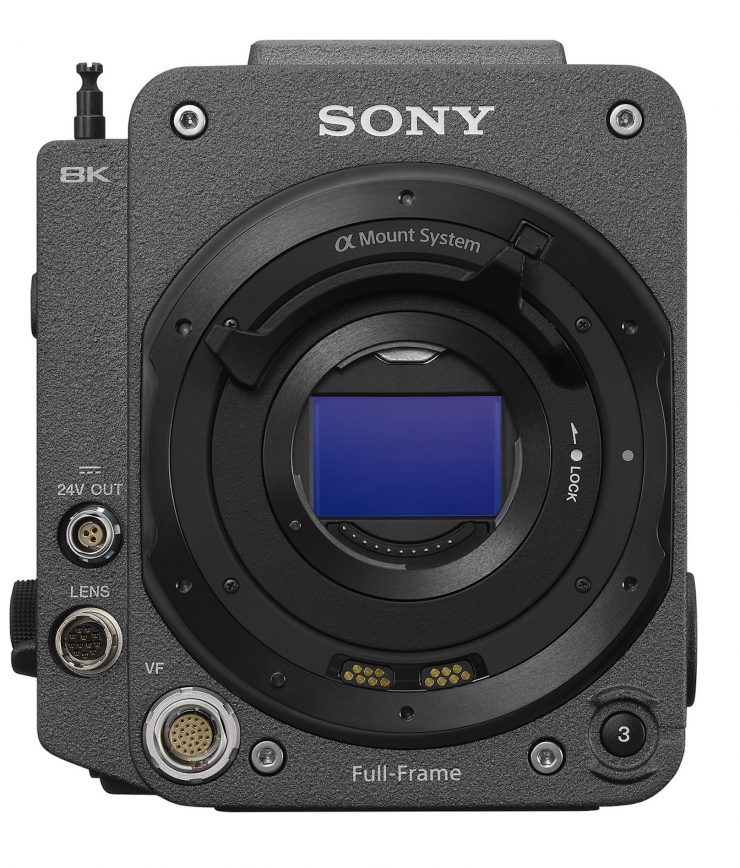
VENICE 2
The BURANO features a completely new 8.6K full-frame CMOS sensor that was developed especially for this camera. While it is similar to the sensor found in the VENICE 2 it is not the same exact sensor.


BURANO 
VENICE 2 8K
Above you can see how the areas of the sensor being used in various resolutions compare to the VENICE 2 8K.
If you drop down to S35 mode the camera is utilizing a 5.8K area of the sensor. This is being downsampled from the full 8.6K of the sensor.

Sony is claiming that the BURANO has 16 stops of dynamic range. As a comparison, Sony also claims that the VENICE 2 has 16 stops of dynamic range.


BURANO 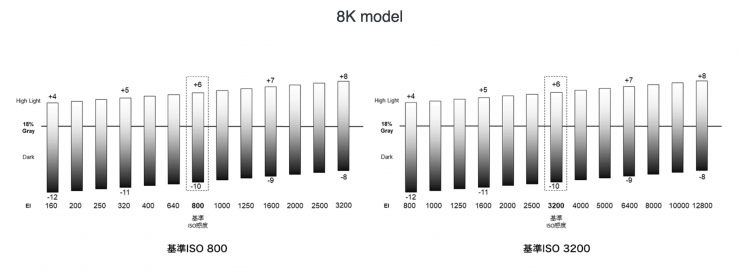
VENICE 2 8K
The latitude of the 8.6K sensor is based on 18% gray, with 6 stops above middle grey and 10 stops below. Essentially the BURANO has the same stops above and below middle grey as the VENICE 2.

The BURANO also has Dual Base ISO’s of 800 and 3200 just like the VENICE 2.
Image quality is what Sony is pushing with the new BURANO. Sony claims that the BURANO has the same low noise and low light sensitivity as the VENICE 2.
While the BURANO’s sensor isn’t identical to that of the VENICE 2 8K, Sony told me that both cameras can be intercut or used together with no perceivable difference in the image.
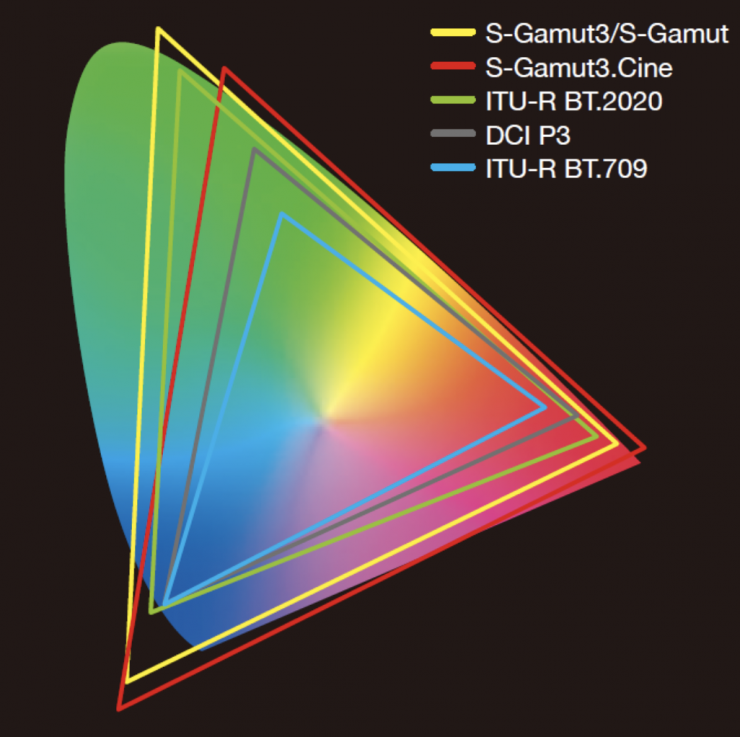
According to Sony, the BURANO exceeds the BT.2020 color space. The camera uses the same S-Gamut3 color space as the VENICE 2 and the now-discontinued F55 and F65.

BURANO comes with four new cinematic looks: Warm, Cool, Vintage, Teal, and Orange, in addition to supporting industry standard s709 and 709 (800%) Look Up Tables (LUTs).
Recording Codecs

As far as what codecs it is using to record in, there are a few options:
- X-OCN LT
- XAVC H
- XAVC
X-OCN
Just like the VENICE 2, the BURANO doesn’t require the use of the AXS-R7 external recorder to be able to record X-OCN files. This is now all done internally to the camera’s dual CFexpress Type B card slots.
If you are not familiar X-OCN, it was introduced in 2016. X-OCN (extended tonal range Original Camera Negative) produces file sizes much smaller than typical camera RAW, but unlike conventional codecs, X-OCN offers 16-bit scene linear encoding.
Now, you don’t get all of the X-OCN recording options as you do with the VENICE 2. The BURANO is only capable of recording X-OCN LT, you cannot record in X-OCN XT or X-OCN ST.
X-OCN LT is ideal when you need even smaller file sizes. These files are 60% smaller than Sony RAW yet still give you the picture quality and image processing flexibility provided by a 16-bit Linear file.
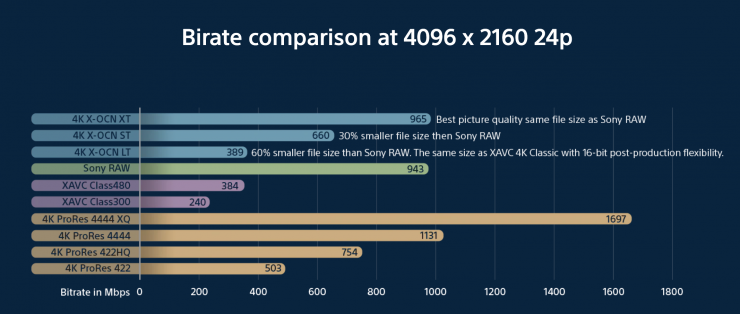
Above you can see a bitrate comparison between X-OCN, XAVC, and ProRes.
Speaking of ProRes, unlike the VENCE 2, the BURANO cannot record in ProRes internally.
So how is Sony actually recoding a compressed RAW recording format internally given certain patents that exist? That is a good question, but I don’t have an answer for you.
XAVC H

You may be wondering what is XAVC H? XAVC H is a new codec that Sony is introducing with the BURANO. This is being touted as a high-efficiency HEVC/ H. 265-based codec that allows you to record for long periods of time. It is twice as efficient as the traditional XAVC H.264 codec.
In XAVC H you can choose from Intra HQ, Intra SQ, or LongGOP. You need to use XAVC H if you want to record 8192 x 430 or 7680 x 4320 and don’t want to use X-OCN LT.
XAVC
Sony removed the XAVC recording options from the VENICE 2 8K, but they are back with the BURANO.
You can choose from XAVC Intra or LongGOP. You can use regular XAVC to record in 4K DCI, UHD or Full HD.
Frame Rates & Resolutions

So what can the BURANO actually record? The camera is capable of recording 8192 x 430 17:9 or 7680 x 4320 16:9 in X-OCN LT at up to 29.97p. You can also record 8192 x 430 17:9 or 7680 x 4320 16:9 in XAVC H.
If you want to record frame rates above 29.97p in full frame you need to drop down to 6K 16:9 or 17:9 where you can do up to 59.94p. This 6K crop is oversampling from the full 8.6K image.
If you drop down to an S35 recording mode you can record 5.8K 16:9 or 17:9 at up to 59.94p. As a comparison, the VENICE 2 can record 5.8K 16:9 or 17:9 at up to 90p.
If you drop down to the S35 Cropped Mode you can record 4K 17:9 at up to 120p. You don’t get a lot of the HFR options on the BURANO that you get on the VENICE 2.

The frame rates and resolutions of the BURANO are fairly substantial bumps over what is available in the FX9. The BURANO doesn’t have any paid license upgrades like the VENICE 2. With the VENICE 2, high frame rates don’t require a license, but to get access to full-frame recording and anamorphic shooting modes still requires you to pay extra for licenses.
The BURANO also features adjustable pre-roll or cache recording depending on what you want to call it. Pre-roll or cache recording allows filmmakers to capture a modifiable amount of footage before pressing the record button. This is perfect for action sports, wildlife, and documentary filmmakers working in unpredictable scenarios.

The length of cache recording you can use depends on the codec, resolution, and frame rate. In saying that, the BURANO’s cache recording times are very impressive. The camera can enable cache recording of up to 11 seconds while filming 8.6K at the highest codec or up to 73 seconds while filming 4K for maximum flexibility.
No Anamorphic Recording Modes
Unlike the VENICE 2 8K, the BURANO doesn’t have any anamorphic recording options. You can only do anamorphic de-squeeze viewing.
For a $25,000 USD camera you would expect it to have anamorphic shooting modes. I think it is an oversite not to include them, but I can see why Sony didn’t. They need to protect the VENICE 2, and that is why this camera doesn’t have anamorphic shooting modes.
Recording Media

The BURANO doesn’t use AXS memory cards like the VENICE 2. Instead, it has dual CFExpress Type B card slots. This makes sense given its recording capabilities and codecs and the fact that it is being squarely targeted as owner operators.

CFexpress Type B cards are fast enough to record the data rates required for the X-OCN LT files. However, you do need to use VPG400-certified cards to do so. The max. bitrate the camera can record is 270MB/s (8K 16:9 @30fps X-OCN LT. You don’t have to use VPG400-certified cards if you are recording in XAVC H or XAVC.
Sony is also releasing its own VPG400-certified CfExpress Type B cards in 1TB and 2TB capacities.
Now, I don’t believe that you can dual-record X-OCN LT files to two cards at once. You can only use one, but you can record proxies to the other. I do believe that you can record XAVC H and regular XAVC to two cards simultaneously.
I am glad that Sony chose to go with CFexpress Type B cards, as a single Sony 1TB AXS S66 Memory Card costs a whopping $4,000.99 USD. Those cards are primarily expensive because they have a maximum write speed of up to 6.6 Gb/s.
Form Factor

The BURANO is very small, and it has more in common size-wise with an FX6 than a VENICE 2. The BURANO weighs around 2.26 kg / 5 lb (Body only without the PL mount). As a comparison, the VENICE 2 8K tips the scales at 4.2 kg / 9.25lb, the FX6 weighs 2.0 lb / 890 g (Body Only), and the FX9 weighs 4.41 lb / 2.00 kg (Body Only).

Now, despite its small size, the reason it is heavier than something like an FX6 is that it features a magnesium chassis and not a composite plastic shell. In a lot of weighs the design is sort of a hybrid mix between a VENICE 2 and an FX6.
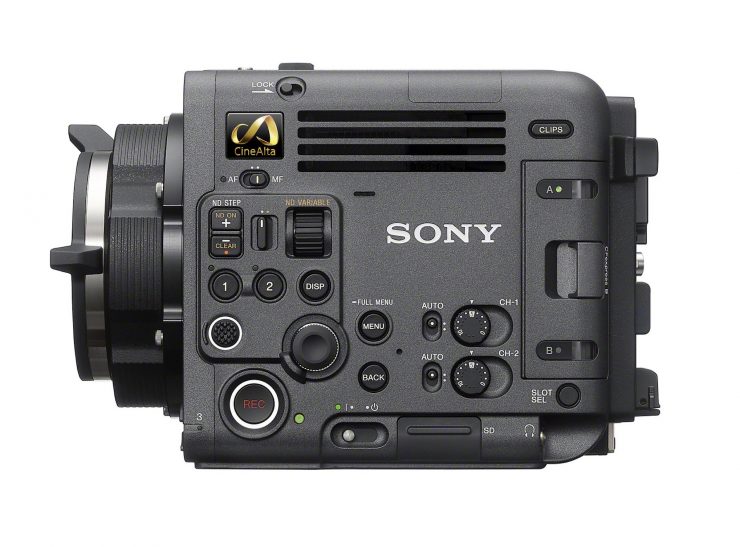
Unlike the VENICE 2, all of the controls are located on the operator side and the XLR inputs are on the opposite side. There are 8 assignable buttons on the body additional assignable buttons on the LCD and the optional handgrip.

Speaking of audio, the BURANO has two XLR inputs that can be switched to Mic, +48, or Line level. There doesn’t appear to be any ability to be able to record more than two channels of audio, although the LCD screen does show four channels of audio so I am assuming there is a way to do it.
The BURANO is a very small camera considering its capabilities. While having a small, compact and lightweight camera certainly has its advantages, I am slightly concerned about how easy this camera would be to use on the shoulder in the real world. Small, lightweight cameras can be difficult to use in this way.

In the above image, you can see that the BURANO looks extremely front-heavy when used on the shoulder.

However, if you rig it out and make it a lot bigger, it looks like you can get it to balance better.

There is an optional Grip Remote Control GP-VR100 that you can purchase to use with the BURANO. This connects up to the camera using the rosette attachment on the body and then you connect it to to the LANC input. It offers basically the same functionality as what the control grip for the FX6 and FX9 does.
You could use any of the same shoulder mount baseplates and hand grip extensions that are available for the FX6 and they will work with the BURANO.

As the BURANO is so small, you could use it in an underwater housing, on drones, gimbals, etc.
By keeping a similar form factor to the FX6 you may well find that a lot of existing third-party accessories may well work with the BURANO.
AF & IBIS

The BURANO features both AF and IBIS. As the camera features two mounts, a native E-mount, with a Pl mount on the top, the functionality will differ depending on on which one you use.

The BURANO has Fast Hybrid AF / Subject recognition by Al processing when used with compatible E-mount lenses. The Fast Hybrid AF features touch operation support and the 627-point Focal plane phase-detection AF covers approx. 89% of the image area. When I asked Sony about the AF performance they told me it should be as good as other digital cinema cameras such as the FX6 and FX9.

As far as IBIS is concerned, you get 3-axis (Pitch, Roll, & Yaw) when using the PL mount. If you use the E-mount you get full 5-axis (Pitch, Roll, Yaw, X, Y) IBIS.

You can turn the IBIS on or off and change how it behaves.
This is certainly a nice addition and given the camera is so small and lightweight, it is bound to come in handy for certain shooting scenarios.
Thinking within the box


BERANO 
VENICE 2
The BURANO certainly follows the current trend of making ‘box’ style digital cinema cameras.
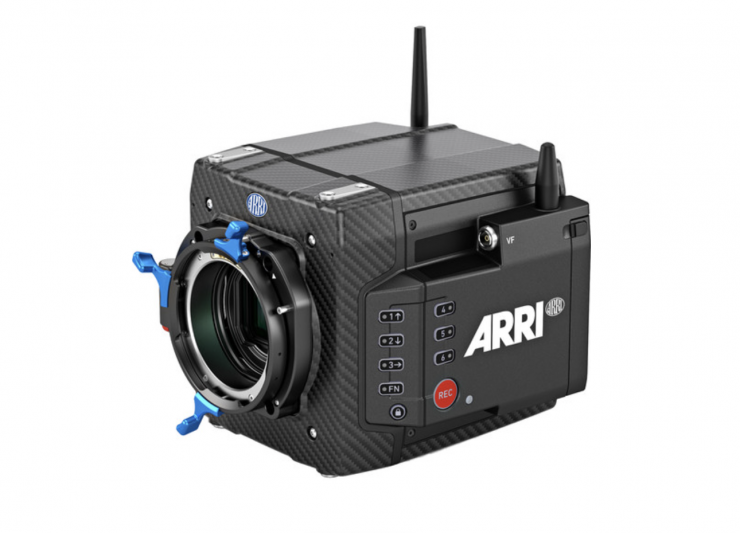
If you look at the digital cinema camera market, almost all of the manufacturers offer a camera in a ‘box’ style. ARRI, RED, Z CAM, Panasonic, and Kinefinity all have cameras that are essentially a box that you then add components to. Canon and Blackmagic don’t make ‘box’ style digital cinema cameras, although you could argue that some of their offerings could be shoehorned into that category.
The BURANO does require you to add additional components to make it a usable camera.
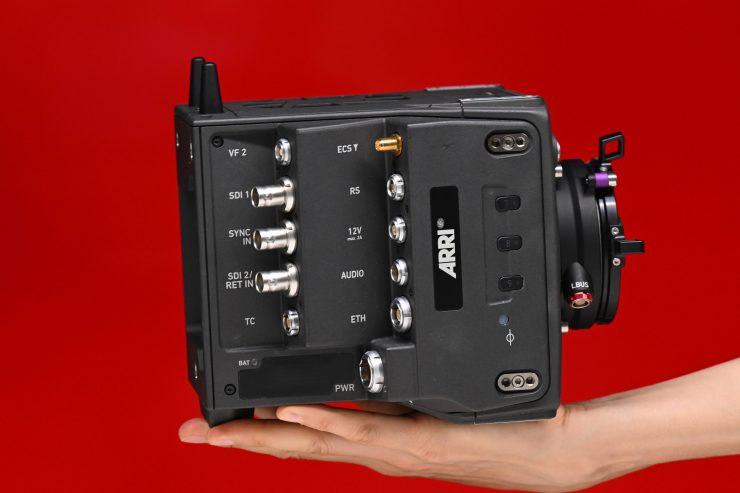
‘Box’ style cameras are popular for numerous reasons, particularly for their ability to be built up or stripped down. Despite this ability, more times than not, they do get built up with numerous components, and depending on the ecosystem, you can end up with a Frankenrig. The best box cameras are the ones that come from manufacturers where they have their own entire ecosystem of accessories and components that work seamlessly and easily with the camera. This is the key to making a camera in this form factor. You need to have all of the components and accessories available that make it work for a variety of shooting scenarios. One of the main reasons that the ARRI Alexa Mini, Mini LF, and Alexa 35 are so popular is that ARRI has an entire ecosystem of components and accessories that are available.
It is no real surprise that Sony is trying to do the exact same thing with the BURANO and VENICE.
ND System


BURANO 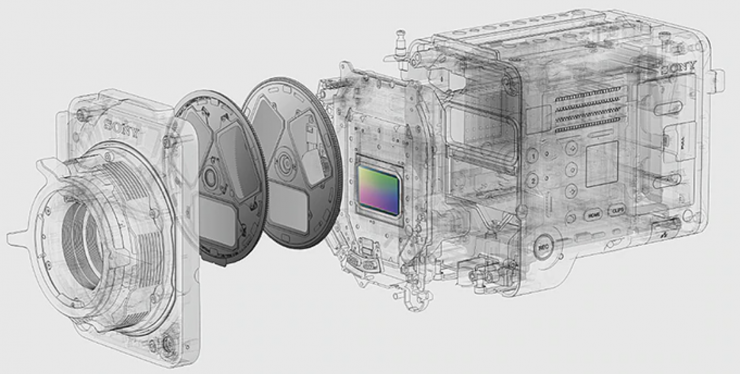
ND system on the VENICE 2
The BURANO utilizes an electronic variable ND filter that is similar to the one found in the FX6. It doesn’t have an optical glass filter like the VENICE 2.
This ND filter is also far thinner than prior ND filters in Sony’s lineup of cinema cameras and is adjacent to the optical image stabilization mechanism. This is confirmation that you can have an electronic variable ND system and IBIS at the same time.
It is interesting to see that Sony chose to use its electronic variable ND system in the BURANO, but I think it was certainly the right choice given the intended market it is targeting. When engaged the electronic variable ND allows you to make adjustments from 0.6-2.1.
Lens Mount

Just like the VENICE 2, the BURANO comes with the industry-standard PL lens mount. It is compatible with all Super35 and full-frame PL lenses, spherical and anamorphic. The lens mount includes contacts that support Cooke/i Technology. Lens information is recorded as metadata frame by frame.

Underneath the PL lens mount is the lever lock type E-mount. This allows you to use a wide array of affordable E-mount lenses and, via third-party adaptors, the world of SLR and rangefinder lenses. Lever lock operation provides added security with large lenses, and in most cases lens support rigs don’t need to be removed when changing lens. Switching from PL Mount to E-mount can be done by simply removing six hex screws, while E-mount lens iris operation is controllable via an assignable button.
It is interesting to see that there doesn’t seem to be an LPL mount available for the BURANO.
Inputs & outputs


BURANO 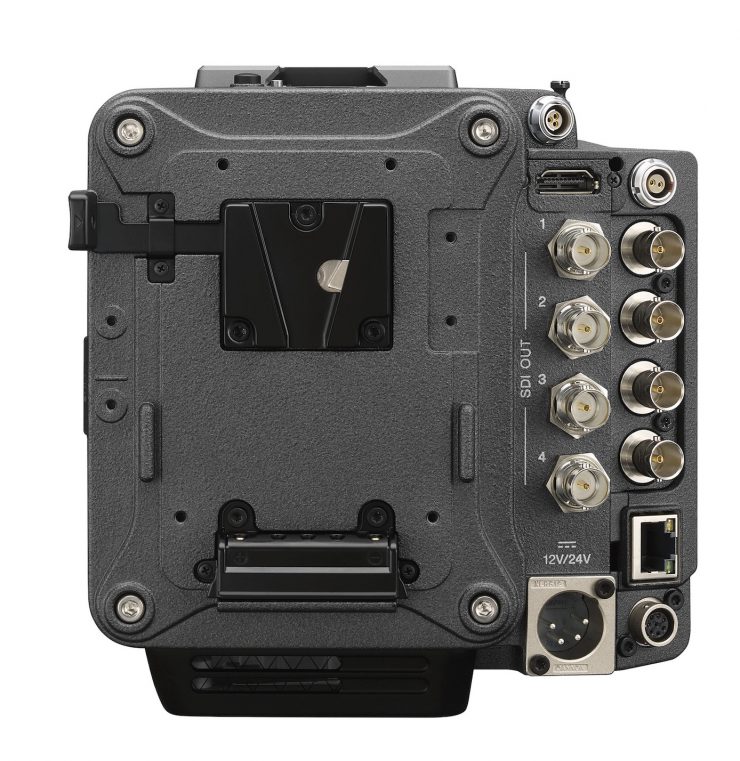
VENICE 2
The inputs and outputs of the BURANO are different from the VENICE 2.
The BURANO has the following inputs and outputs:
- 1x 12G SDI
- 1x 3G SDI
- TC In/Out
- Genlock
- HDMI (full size)
- LANC
- USB-C
- 2x Full Size XLR inputs
- LAN
- DC In (4-pin XLR)
With Genlock, the BURANO can be used for virtual production using large-screen LED displays such as Sony’s new Crystal LED, called VERONA.
As a comparison, below you can see the inputs and outputs of the VENICE 2:
DC Input– XLR-type 4pin (male)
Battery DC Input– Square-shaped 5pin connector
DC Output– 12 V: LEMO (2-pin) x 1, 24 V: Fischer 3 pin x 2
SDI Output- BNC x 4, (12G, 3G, 1.5G-SDI)
HD MONI Output– BNC x 1 (1.5G-SDI)
HDMI Output– Type A x 1
VF– LEMO 26pin
Audio Input– XLR-type 5 pin (female) x 1 (LINE / AES/EBU / MIC / MIC + 48 V selectable)
Timecode Input– BNC x 1
Genlock Input– BNC x 1
AUX– LEMO 5 pin (female) x 1 (Timecode Output)
Remote– 8 pin x 1
Lens– 12 pin x 1
Lens Mount Hot Shoe– 4 pin x 2, conforming to Cooke /i Intelligent Electronic Lens System
Network– RJ-45 type x 1, 10BASE-T, 100BASE-TX
USB– USB host, type-A x 1
Headphone Output– Stereo mini jack x 1
Speaker Output– Monoral
Media Type– AXS x 2, SD card slot x 1
LCD/VF

The BURANO comes with an LCD screen and a loupe so it can be converted into a VF.

The LCD screen has full touch function capabilities and the main operating page looks similar to that of the VENICE 2. Here you can make quick adjustments to key parameters.
The loupe is not the same as the one that currently works with the FX6 and FX9. This is a brand-new loupe that has been designed to be more robust and easier to use. However, in saying that, if you want to have the LCD screen in a position that faces out, which you need to do if you want to use it with the loupe, you need to physically detach it by undoing screws from the support arm that goes to the top handle and then screw it into that new position. This is hardly ideal.


BURANO 
FX9
Unlike the loupe attachment for cameras like the FX9, where the screen is folded out from the camera body, on the BURANO the loupe attaches to the LCD when it is mounted parallel to the camera. This is a much better design and hopefully, the loupe is a lot better than what we saw for the FX9 and FX6.
I am in two minds about this combo LCD/VF. While it is convenient, you have to carry the loupe around when you aren’t using it which can be a pain. I would have preferred to have seen Sony come out with a dedicated EVF for the BURANO, or at least allow you to use the one from the VENICE 2.
I personally think that Sony should have made a proper EVF for this camera, or at least allowed the one from the VENICE to be used. Both the F5 and F55 had proper EVF options available as options. Putting a loupe on a small LCD screen is a hard pill to swallow for a camera that costs $25K and wears the CineAlta badge.
However, in saying that, a lot of younger shooters don’t tend to use them.
Power

The BURANO only draws 50W. As a comparison, the VENICE 2 8K draws 76W. At just 50W you can run the BURANO for extended periods of time via flight-safe batteries.
Having a low power draw is a big deal for shooters who travel a lot as you don’t need to carry as many batteries.
Other Features
The BURANO, just like the FX30 and FX3 cameras is compatible with Sony’s new mobile app “Monitor & Control ,” the latest addition to the Creators Cloud. The app enables wireless video monitoring, support for high-precision exposure determination using false color and waveform monitors, and intuitive focus operation of compatible cameras, on the screen of a smartphone or tablet. In future updates, the BURANO will also be compatible with this app. In addition, Version 1.1 of Camera Remote SDK, the software development kit that now features monitoring will also be supported.
The BURANO will also support S700 protocol over ethernet and a 1.5x de-squeeze display function when using anamorphic lenses, by approximately next summer. Additional software updates to improve user experience and convenience will also be added to the BURANO in future updates.
You can click on this link to see the firmware roadmap.
VENICE Heritage
The original VENICE was announced back in September 2017. It was Sony’s first dedicated full-frame digital motion picture camera system. The VENICE featured a user-interchangeable sensor that could be removed with only four screws, anamorphic capabilities, an eight-stage ND filter, and a new color management system.
When Sony originally launched the VENICE they made a point to mention that it had been designed to be fully modular and even the sensor block was interchangeable. So, as sensor technology advances in the far future, you would have the opportunity to upgrade without investing in a new camera.
This is a concept that has been mentioned for a long time. Remember RED’s whole sales pitch many years ago about being able to buy one camera body where you could upgrade the sensor as the years went on? I think the reality of actually being able to do this probably isn’t feasible, nor does it make a company as much money as selling someone a whole new camera.
In theory, being able to change over a sensor block makes a lot of sense, particularly in a high-end camera where someone is paying a lot of money. Nobody wants to buy a top-tier camera only for it to be superseded within a few years. However, the reality is that technology moves so quickly, that the hardware inside a camera and its recording capabilities won’t be compatible with newly designed sensors and new features. That is the exact scenario Sony has found itself in.
Sony wasn’t able to deliver on its original promise that the VENICE would have the capability to have its sensor block swapped over. When I asked Sony about this at the time they told me that originally when the VENICE was being developed the plan was that the sensor block could be swapped over, however, they managed to get higher frame rates and additional capabilities to work with the original sensor and therefore that somewhat negated the whole concept. There was a plan for a monochrome sensor, but that never came to fruition.
In November 2021, Sony announced the VENICE 2, an 8.6K full-frame camera that can record X-OCN RAW files internally, with a claimed dynamic range of 16 stops. The VENICE 2 is available in two versions, one with an 8.6K full-frame sensor, and the other with a 6K sensor.
With the VENICE 2, a sensor block swap is possible, but there are some caveats. The camera can be used with the 8.6K sensor as well as the original 6K sensor block. The camera body automatically recognizes the change and will start-up without any firmware exchanges or re-installs. The original 6K sensor will allow higher frame rates. Here is what you clearly need to know though. You can put the original 6K sensor (or the VENICE 2 6K sensor as they are identical) in the VENICE 2 8K. You can also put the VENICE 2 8K sensor in the VENICE 2 6K. What you can’t do is put the VENICE 2 8K sensor in the original VENICE.
As I already mentioned, placing a new 8.6K sensor in the original VENICE wasn’t really possible given the hardware constraints in the existing VENICE. Also, because Sony moved away from having to use an external recorder, the onboard recording capabilities wouldn’t have been possible with the current VENICE. The internal processing power just wasn’t up to the task of dealing with the increased resolutions and frame rates, and therefore, it needed to be re-engineered to do so.
The VENICE 2 has proven to be quite popular and with the ability to use the VENICE Rialto 2 Camera Extension System, it is a very versatile high-end camera platform.
The BURANO very much fits into the CineAlta system, and a lot of the heritage from the VENICE cameras has found its way to the BURANO.
Is there a need for the BURANO?

You could well argue that Sony already has so many digital cinema cameras in its lineup that they didn’t need to make another one.
With the F5 and F55 now discontinued, there still is a pretty big gap (at least in terms of price) between the VENICE/VENICE 2 and the FX9. Cameras in the $20-$40K price range have all but disappeared from the market, except for a few exceptions. It really is a hard sell in 2023 to convince someone to buy a camera in that particular price range because the market has arguably shifted to cameras under $10,000 USD and high-end cameras that are $60K and up. One of the reasons behind this is that cameras under $10K USD offer tremendous value for money and feature sets that users could have only dreamed about 10 years ago.
While I still personally feel like there is a market for cameras costing $20-30K, it is a lot smaller market than it used to be. Anybody making a camera needs to weigh up how much it is going to cost for R&D and to make a camera versus how many they can actually sell.
I know a lot of Sony F5 and F55 users were hoping for a replacement camera, but that never materialized. Either those users stuck with their cameras or they migrated to the FX9. I think Sony is certainly targeting those shooters who were originally using the F5 and F55 with this release.
The only trouble with the FX9, and this isn’t a slight on the camera, is that Sony needed to essentially leave certain features and functionality out so that it didn’t step on the toes of the VENICE/ VENICE 2. The BURANO does somewhat step on the toes of the VENICE 2, especially given its price and the fact that it has a very similar sensor and can shoot in 8K. While it may not have some of the higher recording options and frame rates of the VENICE 2, or anamorphic shooting modes, It still gives you VENICE 2 image quality for a lot less money.
The problem any company faces is that if you bring out a product that has 90% of the features of a much more expensive product, then not many people are going to buy the much more expensive offering. When I asked Sony about this, they weren’t worried about the BURANO taking any sales away from the VENICE 2.
Return of CineAlta?
Sony essentially got rid of the CineAlta naming for a lot of its latest digital cinema cameras and instead placed them in what they call the Cinema Line.

This Cinema Line consists of the VENICE, BURANO, FX9, FX6, and FX3, despite the VENICE and BURANO being the only cameras to wear the CineAlta badge.

However, if you actually go to the Sony Pro website the only camera listed in the Digital Cinema Cameras section is the VENICE and VENICE 2. The BURANO will be added to this page on launch.

The FX9, FX6, FX3, and FX30 are all grouped into the Handheld Camcorder category along with 1/2-type and 1/3″-type cameras. At least as far as Sony is concerned, they are separating the BURANO, VENICE, and VENICE 2 from other cameras in their range. Look, this doesn’t really mean anything as far as camera capabilities and performance are concerned, but if you consider that only the BURANO, VENICE, and VENICE 2 are listed in the Digital Cinema Camera section keeping the CineAlta name makes a lot of sense.
What does this mean for the VENICE 2?

To be honest, not much. I don’t think the BURANO steps on the toes of the VENICE 2 too much. Sony has, at least in my opinion, made enough of a differentiation between the two cameras to set them apart enough from each other. However, you are, at least in my opinion, essentially getting a dumbed-down version of the VENICE 2 for a lot less money. Yes, that is probably super oversimplifying things, but I think that is how a lot of people will look at the comparison between the two cameras.
I am not sure whether existing owners of the VENICE 2, including rental houses, will be upset with this announcement. Rental houses, probably not. I say that because the VENICE 2 is more suited to larger productions where a lot more accessories need to be mounted to the camera. The BURANO doesn’t have as much real estate as the VENICE 2 and I am also slightly surprised that Sony didn’t come up with a selection of accessories such as cages and mounting options for the camera. I guess they will be leaving that up to third parties to do.
Price & Availability

The BURANO is scheduled to start shipping in the spring of 2024 for $25,000 USD. For that price, you get a top handle and the viewfinder arm. You can pre-order from 10am ET, Wed Sep 13th.
That is certainly a long wait! It is interesting to see Sony announce a camera so far in advance of when it will actually be available to purchase.
The GP-VR100 Remote Control Grip will be $1,500 USD.
Sony’s own VPG400-certified CfExpress Type B cards in 1TB and 2TB capacities will cost $998 USD and $1,988 USD respectively.
Thoughts

The original VENICE was and continues to be a pretty popular camera. Given the influx of 8K capable cameras that have started to appear, it was not a question of when Sony would bring out an 8K digital cinema camera, but when.
The BURANO is certainly an interesting camera, and at least on paper, it offers some very nice features and claimed VENICE 2 image quality. Having a Variable electronic ND system, IBIS, and AF certainly adds to its appeal.
The BURANO is a nice compliment to the VENICE 2, but while some people may refer to it as ‘Baby VENICE’, I personally feel like it is the camera that the FX9 should have been. A lot of F5 and F55 users patiently waited around for years for a replacement that never came. A lot of those users ended up with an FX9 and some even went to the FX6. Sony now has to convince those people that it is worth spending $25,000 USD to get a BURANO. 2-3 years ago I think this would have been easy to do, but if you already have an FX9 or FX6 and that is making you money and that is what your clients are happy with, will they want to spend more money to hire you with a BURANO? I think that because there hasn’t been a camera in that $20-30,000 USD price range for such a long time, it could potentially be a hard sell, regardless of the camera’s capabilities.
I am also in two minds about the form factor, especially if this is a camera that is supposed to appeal to mid to high-end owner/operators who arguably would have preferred a more ergonomically shoulder-mounted solution like the F5 or F55. Although, in saying that, it does look like you can build it out to do that like you can with most box-style cameras.
What Sony is trying to make a big point of, is that where the BURANO really excels is when it comes to the images it produces. It was interesting to see that they aren’t necessarily making a huge deal about the fact that it is 8K. They are primarily stating that the cameras’ latitude and low light performance are its two biggest selling points.
I personally think that if you can get 4-5 years out of a current digital cinema camera then it is worth the investment. That’s not to say that you can’t get much longer than that, because you certainly can. Just because a new model of a camera appears doesn’t make the old one obsolete.
It is interesting to see Sony re-engage mid to high-end owner/operators who have been waiting for an F5/F55 replacement for so long. While I think a lot of shooters liked the FX9, I think they were hoping for something better and would be prepared to pay more for that.
What are your thoughts about the new BURANO? Is it a camera you would consider? Let us know in the comments section below.






